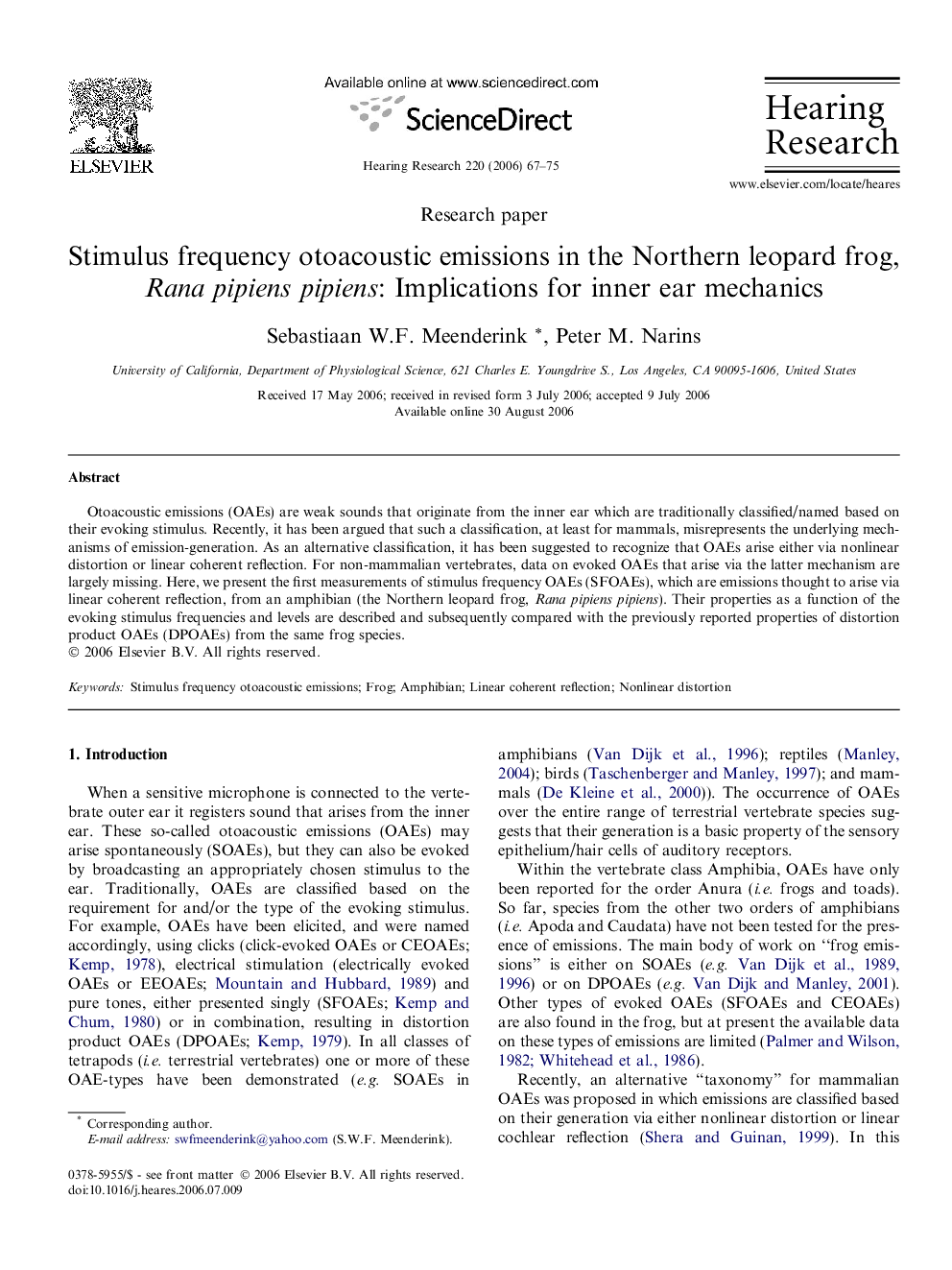| Article ID | Journal | Published Year | Pages | File Type |
|---|---|---|---|---|
| 4356347 | Hearing Research | 2006 | 9 Pages |
Otoacoustic emissions (OAEs) are weak sounds that originate from the inner ear which are traditionally classified/named based on their evoking stimulus. Recently, it has been argued that such a classification, at least for mammals, misrepresents the underlying mechanisms of emission-generation. As an alternative classification, it has been suggested to recognize that OAEs arise either via nonlinear distortion or linear coherent reflection. For non-mammalian vertebrates, data on evoked OAEs that arise via the latter mechanism are largely missing. Here, we present the first measurements of stimulus frequency OAEs (SFOAEs), which are emissions thought to arise via linear coherent reflection, from an amphibian (the Northern leopard frog, Rana pipiens pipiens). Their properties as a function of the evoking stimulus frequencies and levels are described and subsequently compared with the previously reported properties of distortion product OAEs (DPOAEs) from the same frog species.
